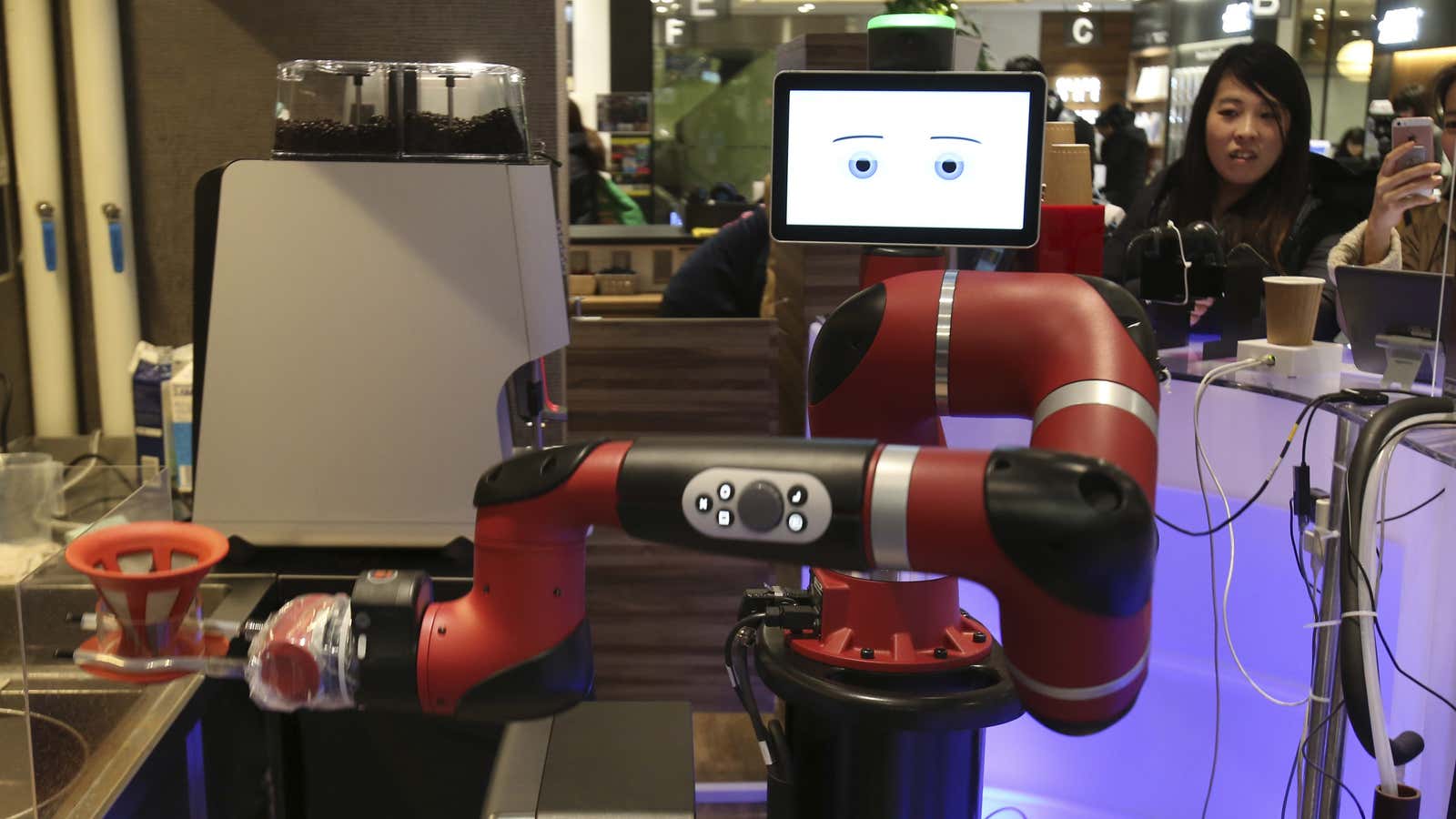When the robot revolution comes, the weapons robots use to destroy us could be cobbled together from the scraps of our own society. You’ve been warned.
More realistically, though, researchers like a group at Georgia Tech are trying to figure out how robots can help us in the most dangerous situations, when our own logic may be clouded by stress.
Lakshmi Nair, a robotics PhD student and member of the group, told Quartz that the team was inspired by the tribulations of the astronauts aboard Apollo 13, who had to jury-rig together a carbon-monoxide removal system after an oxygen tank exploded on their vessel. Between the astronauts and staff on Earth, it took three days to figure out how to cobble together gear to help the astronauts survive. “When I came across that story, one of the things that struck me was that it took a very long time to come up with that solution,” Nair said. “I thought that was a space that robotics might be able to make a difference.”
Nair’s team developed a way for a camera-equipped robotic arm, when presented with a relatively random set of objects, to create tools that can help it solve problems. Using a technique called supervised learning, where the robot was shown objects to understand their properties and learn their uses, the bot was able to learn to put items together to carry out tasks. It could figure out, for example, that a bowl has a concavity, which could be used to scoop something up.
The team’s research showed the bot figuring out how to make a spatula out of a flat piece of metal and a magnet, and how to jam a pointed screwdriver through a sponge to create a squeegee. It also constructed a spoon, a screwdriver (out of a coin and some pliers), and a hammer, among other things. Nair said that after much refinement, it only takes the robot about 30 seconds on average to come up with a tool to complete a task.
Nair said that the team is still working on the robot, aiming to teach it about material structure, as well as form. While a long foam brick may look like a suitable object for building a hammer to the computer’s eye, a human would know that foam is soft and not right for the job.
The hope is that this work could aid people in all sorts of stressful situations, from search-and-rescue to the future of space exploration. Nair envisioned a future where robots could be used as scouts, going on ahead of humans, to create livable structures on the moon or Mars out of what’s around them, before humans get there.
Nair’s team was also inspired by the 1980s TV show MacGyver, where the titular character is known for building tools to help himself out of tricky situations using what’s in front of him. The show was recently rebooted, and it’s likely that the team’s slow, mute robotic arm would’ve made for better television than the current iteration.
